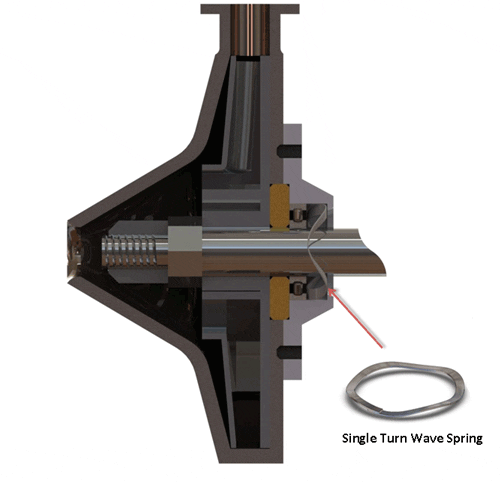Wave Spring Used on Diesel Engine Water Pump Design

|
Wave Spring used on Diesel Engine Water Pump Design
|
||
|
These pumps (classified as “centrifugal impeller”) are used for large diesel engines such as locomotives. The pump is connected to a motor which delivers rotational kinetic energy to a shaft. At the end of the shaft is an impeller. In general, an impeller is the opposite of a propeller. Instead of providing thrust, an impeller sucks in. If the pump was reversed, you would create hydraulic thrust. The liquid or in this case water is sucked in and pushed outwards by the “blades” of the impeller exiting the pump. Hence the name, centrifugal impeller pumps.
The main purpose on improving these kinds of pumps is to increase life time and cut down on maintenance in a costly manner. One way the new design accomplishes this is by utilizing a wave spring. A wave spring is an effective and easy way to maintain the bearings and the pump’s quality of life.
The wave spring is mounted into the housing of the pump, around the shaft and engages the housing and the drive end of the outer race bearing of the impeller. The preloaded wave spring will cut down on the already large thrust loads that the tapered roller bearings are under by absorbing some of the reverse thrusts. The wave spring will also help keep the bearings in place to cut down vibrations which could damage the bearings, and the pump. By doing so, the wave spring will save the bearings from wear increasing the pumps over all life.
 For other applications and information on single turn wave springs and multi-turn wave springs, visit Rotor Clip’s Tru-Wave website
|
||
More than Parts. A True Partnership.
Our passion is creating the best rings, springs, and clamps. Our mission is to make your work a success. We are here for you.
